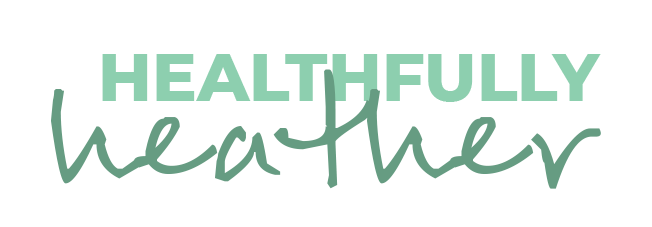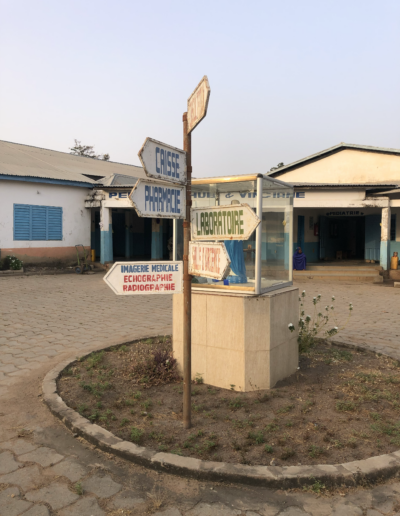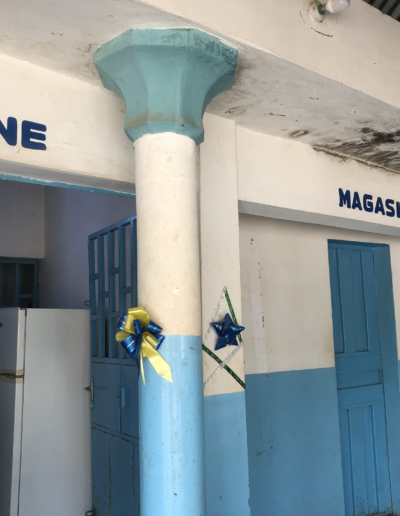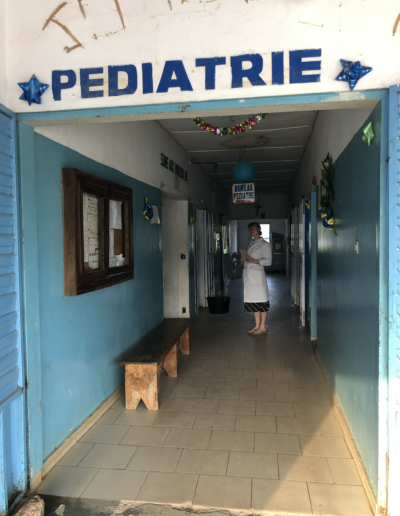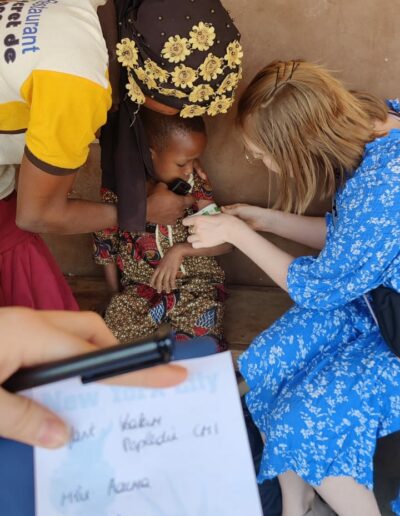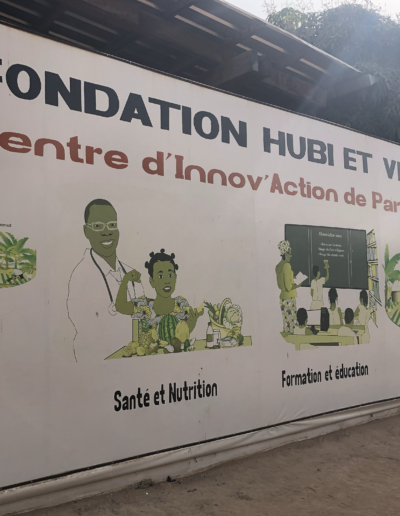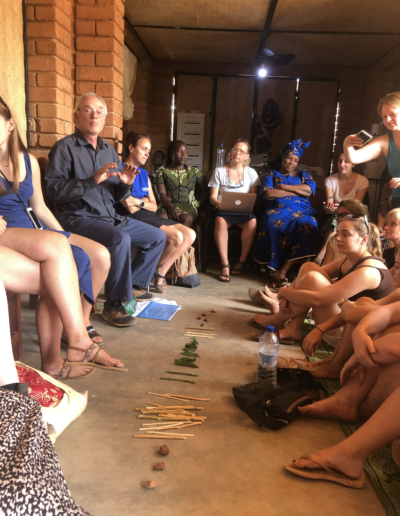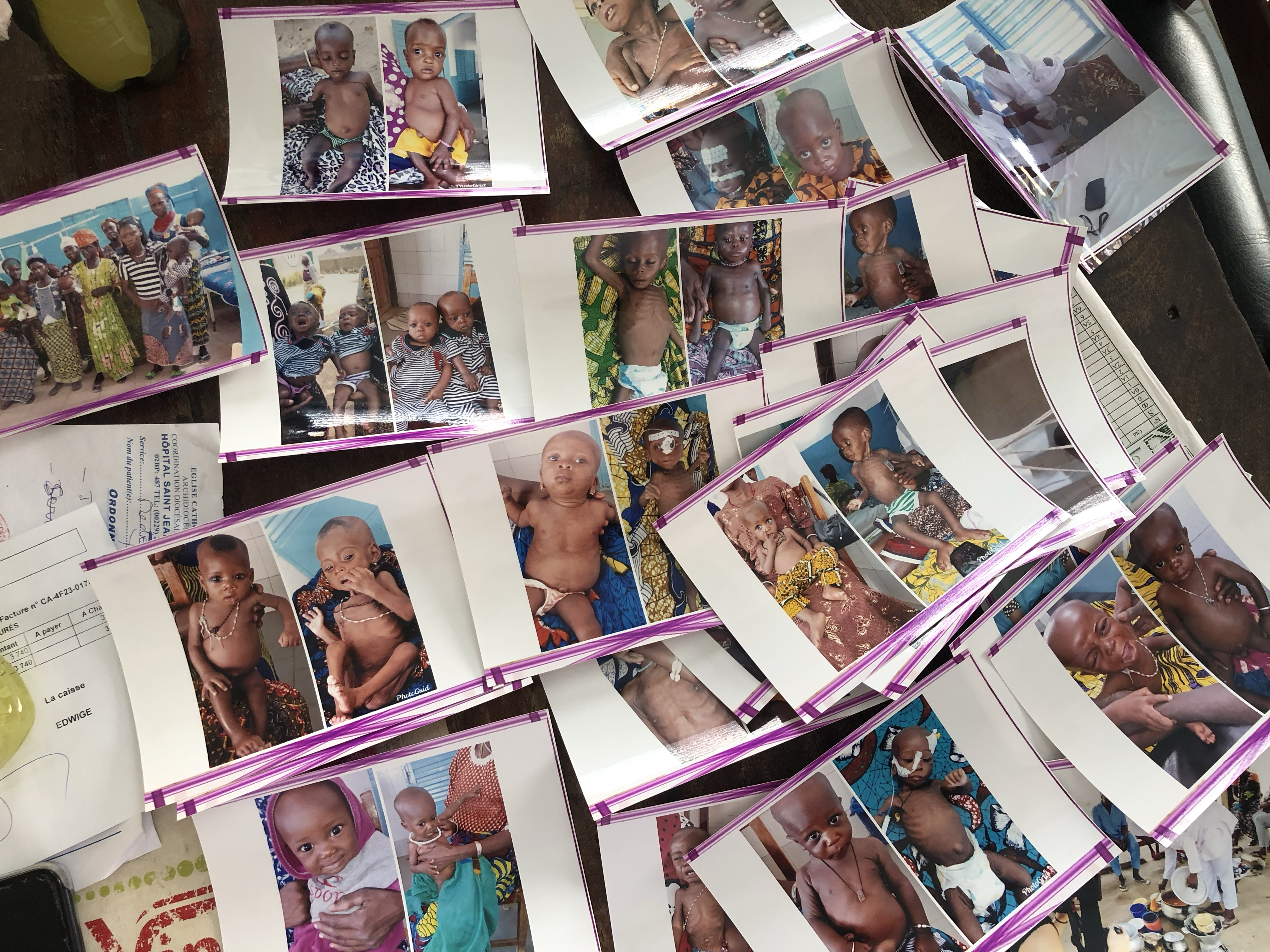
Week 2: Continuation Pediatrics
After a busy, but very interesting first week, we energetically started our second week of the internship in the hospital in Boko. Most days were very similar to those of the first week. Our day always starts with a kind of multidisciplinary conversation, la reunion de staff, after which the nutritionist arrives and we can start with the nutrition-related part. The children in the ward with malnutrition are weighed, any adjustments/additions to the diet are applied and the milk is prepared and distributed. In between, we also have the opportunity to view files, to make the feeding schedules of newly arrived children with malnutrition, to follow the follow-up consultations with children who are (on the way to be) cured of malnutrition, etc.
Visiting the laboratory
This week our Tuesday afternoon was a little different. The group of students with whom we were able to carry out some activities about malnutrition and education last week, visited the laboratory of our hospital. We were able to enjoy the guided tours to discover a new place in this – for Bénin – fairly large hospital. The BLT (Biomedical Laboratory Technology) students told us that the equipment and way of working here are both very progressive and very outdated. Thanks to donations from UZ Leuven (University Hospital of Leuven, Belgium), they sometimes have very modern equipment, but at the same time they perform other tests completely manually, even though better techniques have long been available. So you notice how much they depend on donations here. It was also very unbelievable when the students told us that one of the lab technicians did not even know that you can increase or decrease the flame of a Bunsen burner according to how you turn the valve to regulate the air supply.


A new arrival with serious malnutrition
On that same Tuesday, a ‘new arrival’ arrived at the paediatrics, a girl named Beauté (pseudonym) with severe malnutrition. Beauté is a 15-month-old girl weighing only three kilograms. She is raised by an elderly woman (her relationship with Beauté’s family is unknown to us) after her mother died in childbirth. She has been hospitalized several times since she was nine months old. She has an umbilical hernia, but before she can be operated on, her nutritional condition must first improve. Knowing that a 15-month-old girl weighs only three kilograms, it is hard to imagine that this situation is even an improvement on how she was before.
As the malnutrition continues and because of certain features in Beauté’s face, the health workers fear that a congenital disorder is the cause. Unfortunately, they do not have the means to actually test this. The BLT students and teachers were therefore very moved when they saw this little girl when she came to them for a blood test. They soon came to ask us for more information and as soon as they heard that the mother was gone and Beauté is being fostered by someone else, they offered to make a donation to the woman who is raising her. Since it was a relatively large donation, the social assistant decided to give her a part of the donation each time she comes for a follow-up consultation. This was also explained to the woman, who was clearly very grateful for the generous help.
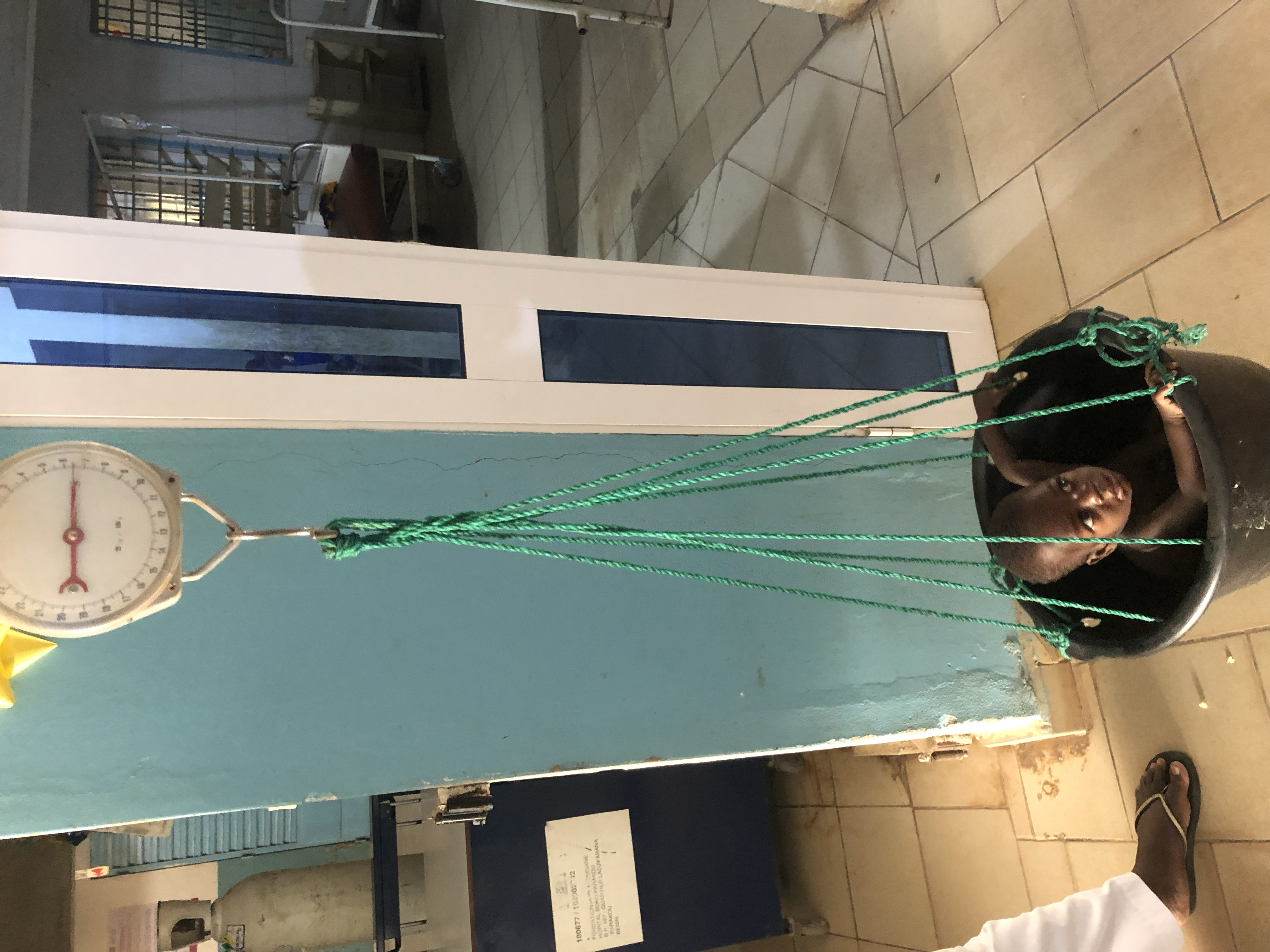
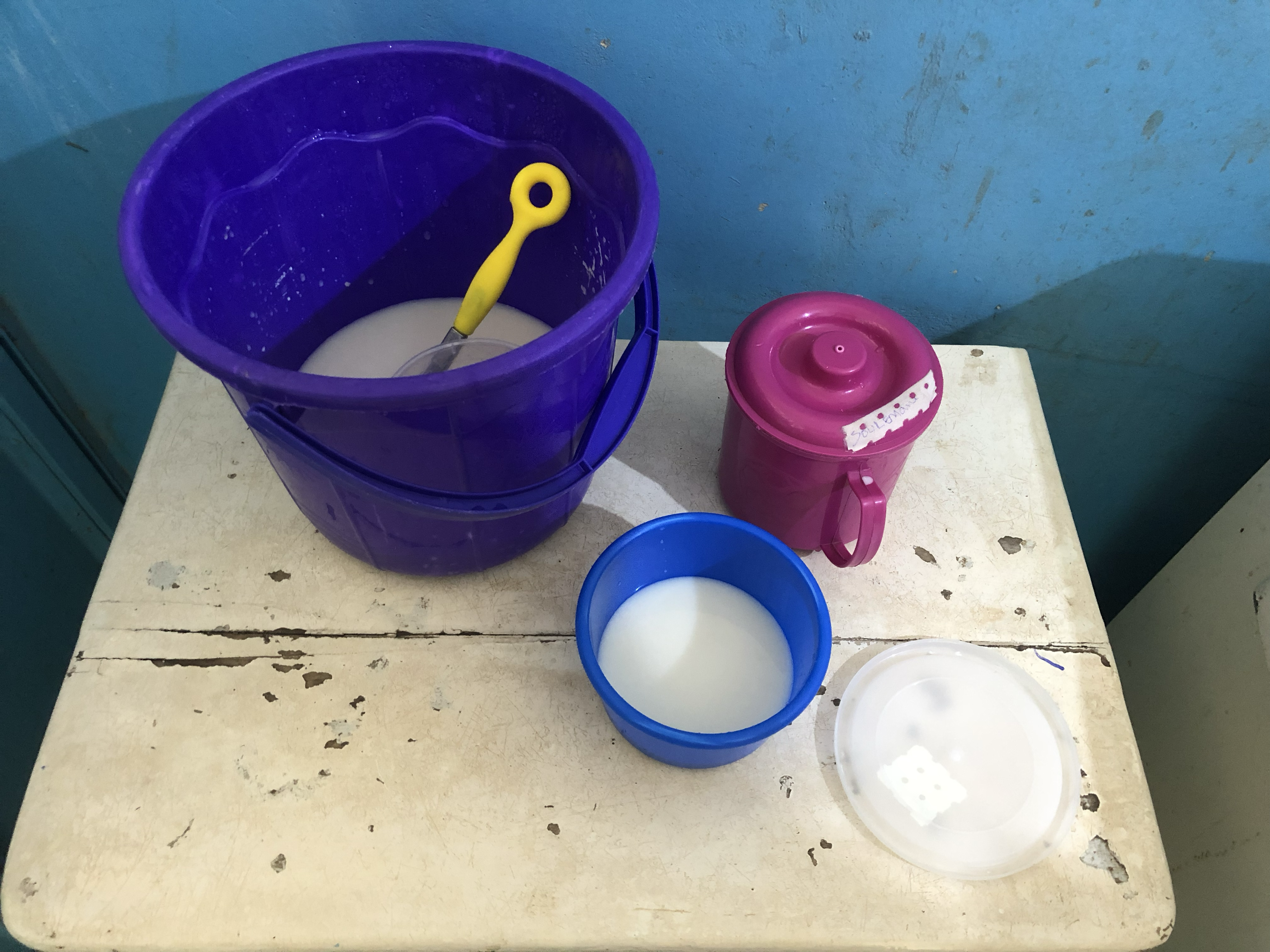
At the beginning of last week, a child with severe malnutrition was admitted to pediatrics whose case is very similar to Beauté’s. This is another 15-month-old girl with severe malnutrition who was admitted to the paediatrics. On arrival at the hospital, this girl weighed only four kilograms. The first few days her nutritional status stagnated and there was no immediate improvement. Only after a while was it noticed that she was gaining weight. Again, we noticed certain facial features suggestive of an underlying condition and were told that the staff thinks it is a trisomy (the presence of an extra chromosome). Today, a week and a half later, our little patient has gained half a kilo and improvement is on the way. After adding Plumpy Nut to the diet, she can now switch to a mixture of Plumpy Nut and Bouillie (an enriched porridge), which demonstrates the positive evolution in her nutritional status.
Malnutrition screening in Yebessi
On Wednesday we accompanied the group of students for the last time with the screening for malnutrition and malaria and the care of wounds. This time we were taken to le center de santé in Yebessi, a village about 75 km from Parakou. Again, we were responsible for screening for malnutrition in the children from six months old up to and including the age of four years. Fortunately, this time we only had one child whose UAC (upper arm circumference) was in yellow and we had to warn him about the risk of malnutrition.
Since we finished the malnutrition fairly quickly, Femke followed up with wound care afterwards. Here was a man who had been involved in an accident with his motorcycle the night before. He then went to a hospital, where they quickly sewed up his wound and he was soon sent home. When he came to us, he was still wearing the same clothes he had in the accident, the bottom of his pants had been cut off to access the wounds on his leg. However, these wounds were anything but well treated. His leg was completely inflamed and swollen, and no heartbeat could be found at the level of the knee.
There was compartment syndrome and a risk of loss of the leg if there was no rapid improvement. His wounds were then thoroughly cleaned (some of the smaller wounds had never even been looked at in the hospital as the blood was still all over them), loose skin was removed, and the necessary medication and care administered. If there was still no improvement on Thursday, the gentleman had to immediately go back to a better hospital in Papané where good follow-up could be guaranteed.
Visiting the Hubi & Vinciane foundation
Around noon we returned to Parakou, where we visited the home base of the Hubi & Vinciane foundation. Here we received a presentation about what the foundation works on as well as a small lecture from a Swiss doctor who has been working in Africa since 1975. This presentation was about how they are trying to introduce responsible family planning in Beninese families, teaching father and mother how to follow a woman’s fertility in a natural way. They then learn to use this information in order to fulfill the wish of whether or not to make a child. The importance of a simple presentation to the local population was also explained to us, given that anatomical knowledge is very limited and an approach that is too scientific would only cause confusion.
At the end of the afternoon, both we and the larger group gave all the material we had brought to donate. Scales for large and small, blood pressure monitors, baby clothes, and suitcases full of various materials were received with great gratitude.
There you go, these were our two weeks of internship in pediatrics at the hospital Saint Jean de Dieu in Boko. It was two exciting weeks alternating between very quiet and very busy, long days. Next week we will move up one building and start at the maternity ward. We are very curious about how our internship there will go and what situations we will see there. We are certainly looking forward to it!
